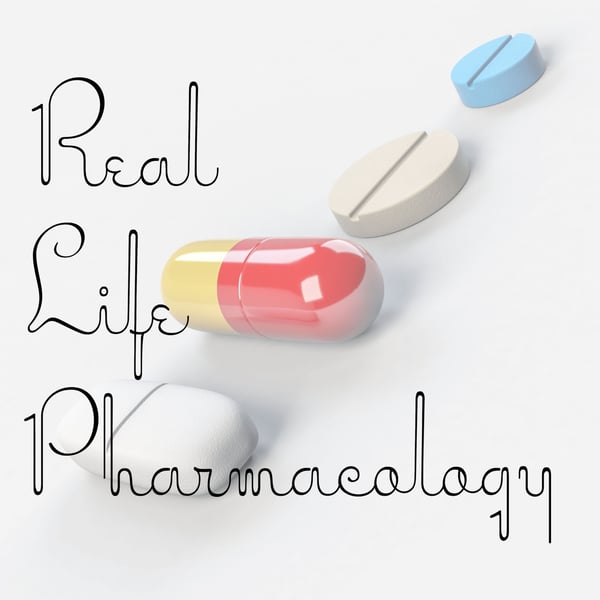Levofloxacin Pharmacology Podcast Episode 309
Real Life Pharmacology - Pharmacology Education for Health Care Professionals
Eric Christianson, PharmD; Pharmacology Expert and Clinical Pharmacist
5 • 716 Ratings
🗓️ 11 January 2024
⏱️ 13 minutes
🧾️ Download transcript
Summary
Levofloxacin is well known to cause QTc prolongation and many drugs can increase this risk such as antiarrhythmics, citalopram, antipsychotics, and many more.
Binding interactions are important when discussing levofloxacin pharmacology. Calcium, iron, magnesium, and many other cations can block the absorption of this medication.
I discuss tendon rupture in relation to levofloxacin use and what factors may increase the risk of this rare adverse effect.
Transcript
Click on a timestamp to play from that location
| 0:00.0 | Hey all, welcome back to the Real Life Pharmacology podcast. I'm your host, pharmacist, Derek Christensen. |
| 0:05.2 | Thank you so much for listening today. As always, get your free 31-page PDF, absolute no-brainer |
| 0:10.9 | for any pharmacy student, nursing student, med student, anybody studying for any board exams. |
| 0:16.4 | That free resource, it's a 31-page PDF. You can find it at real life pharmacology.com you get access |
| 0:22.6 | to that simply with an email and subscribing to our email list so definitely go check that |
| 0:29.1 | out at real life pharmacology.com the drug of the day today is levofloloxasin. Brand name is Levaquin. When I first graduated many, many years ago, |
| 0:41.5 | I saw this medication used a lot for sure. It is a little bit of a broader spectrum antibiotic. |
| 0:51.4 | It is part of the quinolone class of medications and quinolones inhibit DNA gyrase. |
| 1:02.5 | Now this is important, DNA gyrase is important for DNA replication, transcription, and ultimately maintaining DNA structure. |
| 1:15.5 | So by blocking DNA gyrase, this basically blocks that relaxation of supercoiled DNA |
| 1:25.0 | and ultimately facilitates the breaking of DNA strands within bacteria |
| 1:33.0 | and also ultimately prevents replication and transcription. |
| 1:38.5 | So that's how this medication works, which is pretty unique compared to a lot of other antibiotics, |
| 1:46.6 | which work on ribosomes or cell wall inhibition. This is definitely a bit of a unique mechanism |
| 1:55.2 | of action. Dosing of this medication, typically you're going to see in the range of 250 to 750 milligrams per day. |
| 2:04.3 | It can be reduced based upon renal function or the frequency can also be reduced based upon renal function there. |
| 2:13.3 | Severe infections, you know, you're going to be pushing 500 to 750 milligrams, maybe less severe infections or patients with poor renal function, things of that nature. |
| 2:24.0 | We may be looking more towards the 250 milligram dose. |
| 2:27.9 | Indications, what do we use this for? |
| 2:30.4 | It's got a lot of potential uses, and I think that goes along with the broader spectrum of coverage that this medication has. |
| 2:40.4 | So pneumonia can be used for UTIs, skin and soft tissue infections, joint and bone infections, |
| 2:48.5 | even as an alternative medication in some of the STDs as well as tuberculosis. |
... |
Transcript will be available on the free plan in -447 days. Upgrade to see the full transcript now.
Disclaimer: The podcast and artwork embedded on this page are from Eric Christianson, PharmD; Pharmacology Expert and Clinical Pharmacist, and are the property of its owner and not affiliated with or endorsed by Tapesearch.
Generated transcripts are the property of Eric Christianson, PharmD; Pharmacology Expert and Clinical Pharmacist and are distributed freely under the Fair Use doctrine. Transcripts generated by Tapesearch are not guaranteed to be accurate.
Copyright © Tapesearch 2025.

